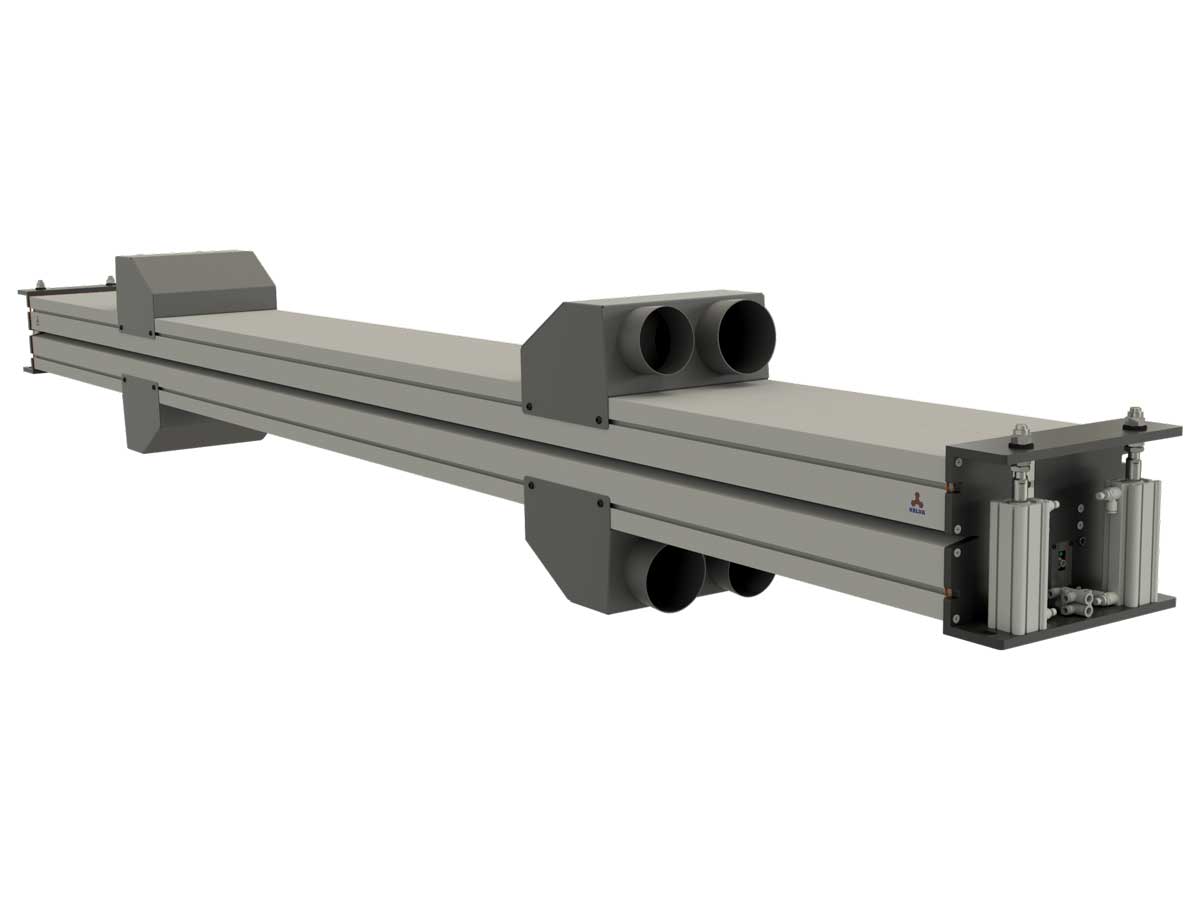
Web Cleaning for Textiles and Nonwoven
Special web cleaning solutions for eliminating dust from low tension fabric webs.
In every textile manufacturing process, whether using different materials or techniques, there’s a common issue: Airborne dust particles, fibers, and lint. These tiny bits can infiltrate every step of production, whether it’s spinning, reeling, weaving, knitting, or making nonwoven fabrics.
Contamination of the machinery and fabric web are constant concerns, posing challenges throughout the creation of textiles and nonwoven goods. But all these dangers can easily be mitigated by implementing a web cleaning solution. Here, we explain why you should use web cleaning in the textile and nonwoven material production process.
Contact usEssential: Cleaning your web for textile and nonwoven fabrics
The process of web cleaning is essential for textile industry production as it removes contaminants like dust, fibers, and lint, ensuring high-quality end products. Additionally, it enhances efficiency, reduces waste, and extends equipment lifespan, leading to cost savings and smoother operations.
With nonwoven materials, the step of web cleaning is even more important, as nonwovens are often used in the production of medical equipment such as medical gowns, surgical drapes or face masks.


Why do textiles require web cleaning?
Textiles require a web cleaning solution to ensure that the materials used in production are free from contaminants such as dust, fibers, and lint.
If not properly removed, contaminants can gather in large amounts, impacting important production steps like washing, bleaching, dyeing or printing. This can negatively impact product quality and production efficiency, leading to defects, waste or even equipment damage.
Web cleaning for nonwoven materials: Even more critical
Due to the manufacturing nature of nonwovens (which is similar to paper production), there are some significant dust sources when converting these webs. In particular, the unwinding process produces a significant amount of dust and loose fibers, as pulling away a layer of nonwoven from the core releases a substantial amount of debris.
Almost all nonwoven products need to be dust-free. For instance, nonwoven medical protection materials like face masks understandably need to be perfectly clean and particle-free. And even in nonwoven items of daily use, such as coffee filters, nappies or feminine hygiene items, the absence of particles is an indication of high quality.
Benefits of web cleaning in the textile and nonwoven industry
Web cleaning in the textile and nonwoven industry enhances product quality, improves efficiency, reduces waste, extends equipment lifespan, and leads to cost savings. In that regard, the benefits are comparable to other materials that profit from web cleaning.
Improved Product Quality
Proper cleaning nsures that the materials used in textile and nonwoven production are free from contaminants, resulting in higher-quality end products with fewer defects.
Enhanced Efficiency
By removing dust, fibers, and lint from the production process, the usage of web cleaners reduces the need for manual cleaning and maintenance, leading to smoother operations and increased productivity.
Extended Equipment Lifespan
Regular web cleaning helps prevent the build-up of contaminants on machinery and equipment in the production lines, reducing wear and tear and extending their lifespan.
Reduced Waste
Cleaner materials mean fewer rejected products, resulting in lower waste levels and increased overall efficiency in the manufacturing process.
Cost Savings
By improving product quality, reducing waste, and minimizing equipment downtime, web cleaning systems ultimately lead to cost savings for textile and nonwoven manufacturers.

How web cleaning removes dust in textile production
As we know, there are generally two forms of web cleaning in textiles: Contact and non-contact. And they work for a variety of web width.
In textile production, non-contact systems such as our KELVA TL2 line for example, use airflows to release contaminants into the air and then vacuum it into a capture and filtration system.
Contact cleaners on the other hand use faceplates, sometimes in combination with brushes, that make contact with the surface of the web. This releases the dust and other contaminants, which are then vacuumed away.
What is the best web cleaning solution for textiles?
For all kinds of textiles, fabrics and comparable low tension webs, KELVA has developed special non-contact web cleaner heads. These heads have a special slot configuration for the vacuum and blowing air to give extra support to the web when passing the cleaner.
The KELVA SL, TL or HS85 Lines of non-contact cleaners are especially made for this kind of cleaning. They are especially suited to the generally low tension of fabric webs.

Installation examples
contact
Our experts will be happy to help you. Get in touch with us!



